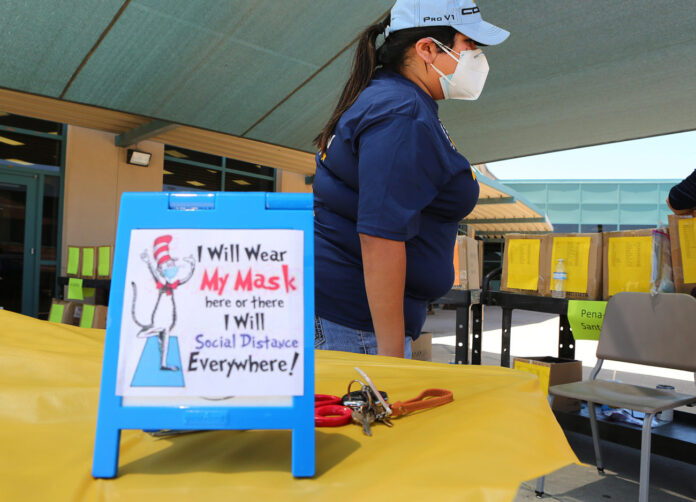Many classes are back in session as a historic virtual school year commences.
Monday marks the first day for the McAllen, Roma, Valley View and Progreso school districts, and because of the COVID-19 pandemic and Hidalgo County’s order for all schools to operate remotely until Sept. 27, classroom doors won’t be opening — instead, laptops and tablets will.
State Sen. Juan “Chuy” Hinojosa recently acknowledged the unprecedented nature of the school year forcing students, parents and educators to be guarded about their health and others while also prioritizing their academics. This of course means educating from home in most circumstances.
“We are facing very challenging times, and it requires flexibility on the part of our teachers, students and parents,” he said. “There is anxiety and rightly so, because we don’t know what is going to happen, but in moving forward, we need to focus on our education.”
All of McAllen ISD students have had the opportunity to pick up an iPad or Google Chromebook for the school year. Additionally, hundreds of hotspots have been distributed.
Teachers and staff have also gone through professional virtual teaching training sessions throughout the summer to learn about several online platforms that will be implemented during the next four weeks of online learning.
Roma ISD, which has more than 6,000 students enrolled this school year, has provided the entire student body with either a Google Chromebook or iPad.
Monday is also the first day of classes at the University of Texas Rio Grande Valley and South Texas College.
Colleges are excluded from the county’s executive order, and so for the fall semester, 68% of classes at UTRGV will be conducted completely online, which includes 3,628 undergraduate and graduate courses. Then, 22% will operate on a hybrid/reduced seating model, and 9% with traditional, face-to-face classes.
South Texas College will also be operating on a hybrid of online and in-person curriculum. The college will be offering about 20% of its 4,500 courses partially in-person, and the rest completely online.
Classes meeting in person will have a set maximum of 20 students in each lecture, with no more than 10 students meeting at once on campus.
Other local school districts have already begun classes. IDEA Public School across the region reopened on Aug. 10, and Rio Grande City ISD and Sharyland ISD started classes on Aug. 17.
School districts that will be having their first day of school later in the week on Aug. 31 include Weslaco, Edinburg, Edcouch-Elsa, Mercedes and Hidalgo.
Weslaco ISD has distributed about 1,500 hotspots so far, and will be distributing 3,800 in the next few weeks. This year, the district has an enrollment of about 16,000, and each student has received a Google Chromebook, along with a mouse, charger and headset.
Then, PSJA ISD’s first day of school is set for Sept. 7, and Mission CISD, Donna ISD and La Joya ISD on Sept. 8.
PSJA ISD is planning to give either a laptop or iPad to each of its 31,186 students this school year — about 26,400 laptops to second-grade students and up, and nearly 6,000 iPads to pre-K to first grade students.
Mission CISD has about 15,300 students enrolled this year, and all classes will be taught asynchronously, meaning that students will work at their own pace and are not required to take part in live lessons.
Donna ISD’s decision to push the first day of school to September came on the same day that the school board approved a $3.7 million project to install a dozen Wi-Fi towers across the city.
In a survey the district conducted, 52% of its student body said they do not have a Wi-Fi connection at home. The multi-million project aims to tighten the internet divide among Donna ISD students.
Valley Interfaith, a nonprofit organization, held a news conference Friday with more than 140 leaders across the state to urge Gov. Greg Abbott to be guided by medical advice when making the decision of allowing school to reopen.
The organization advised the governor to not allow students back in classrooms until there are fewer than 25 cases of COVID-19 for every 100,000 people in a county, and the two-week positivity rate is lower than 5%. These are guidelines provided by the Harvard Global Health Institute and the World Health Organization.
Hinojosa warned that virtual instruction will only work if everyone works together.
“It will require cooperation, it will require coordination, and quite frankly it will require ingenuity not only from our teachers, but our students and parents. We are all in this together, to stay healthy and safe, but also meet our responsibility to our students so that they can learn and continue with their education.”
___
Editor’s note: This story was updated to clarify information about the laptop and iPad distribution for PSJA ISD.





